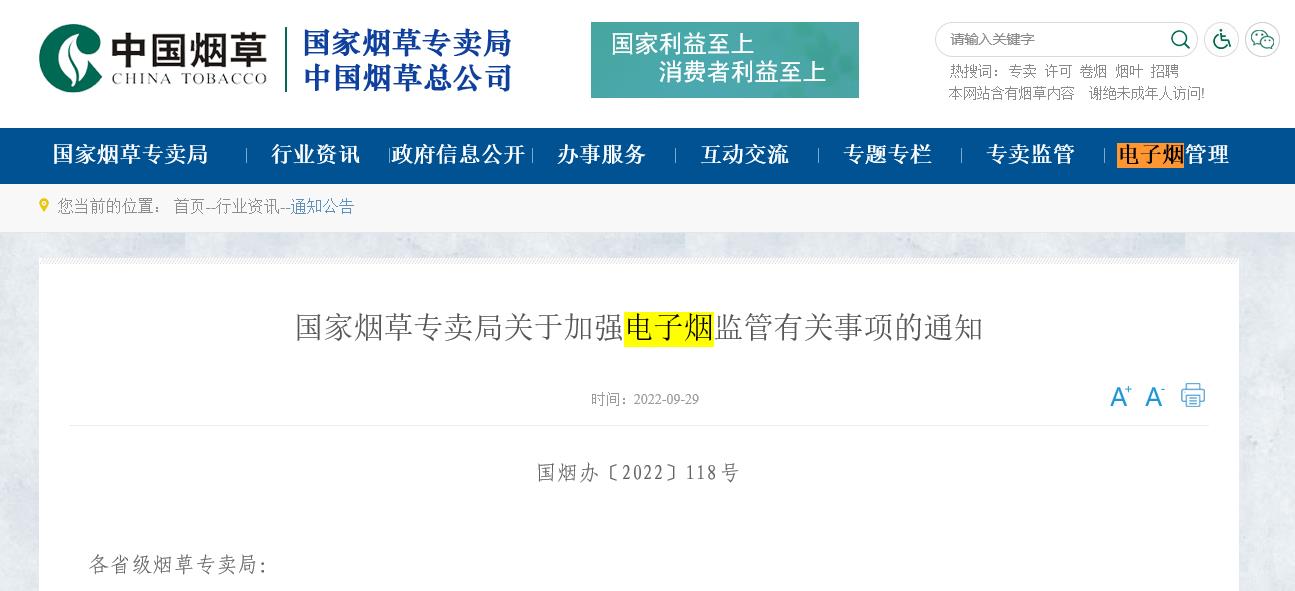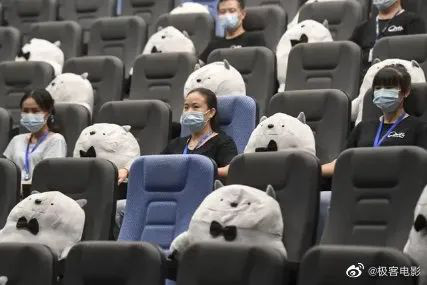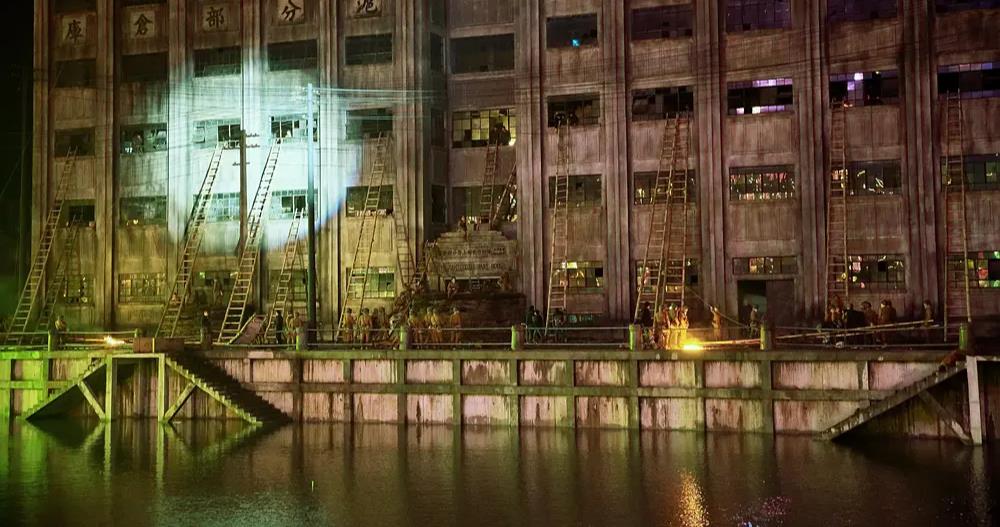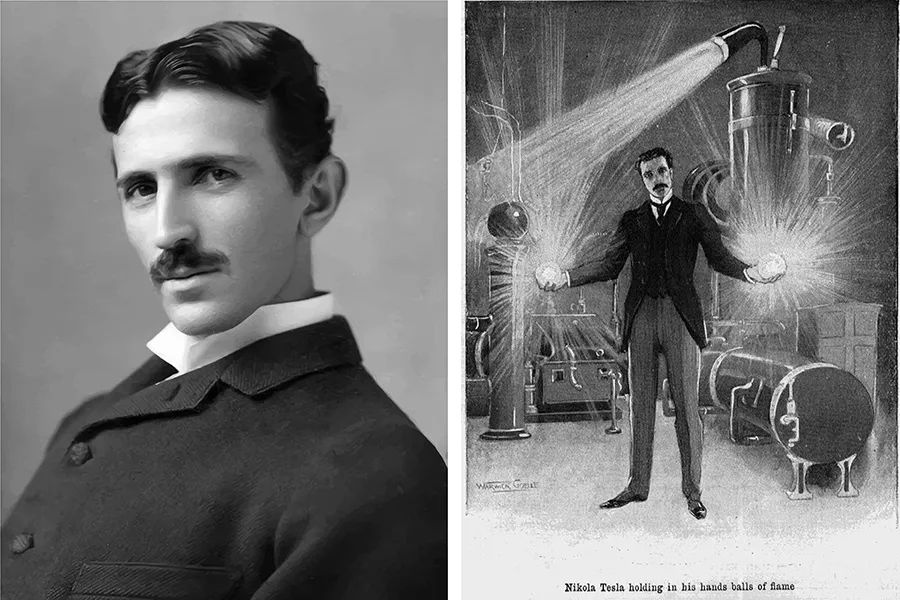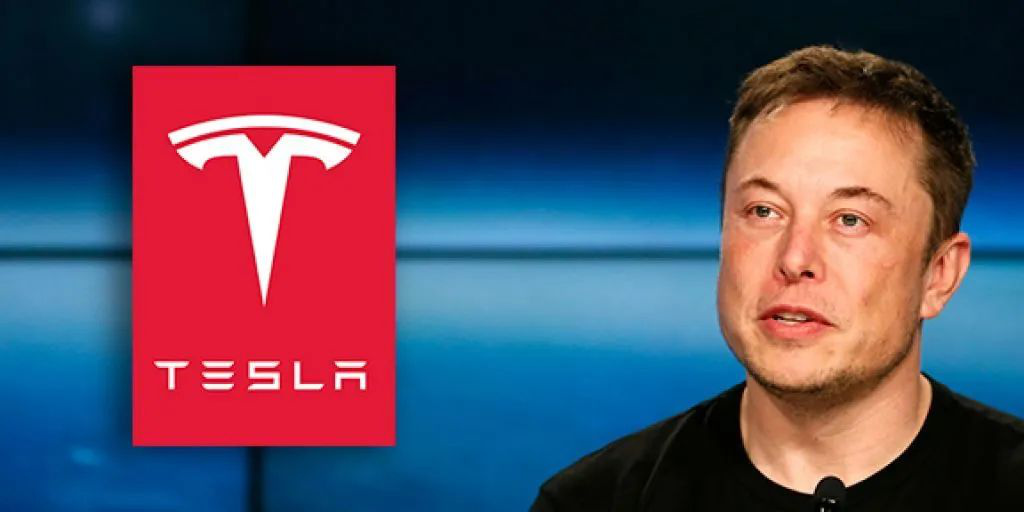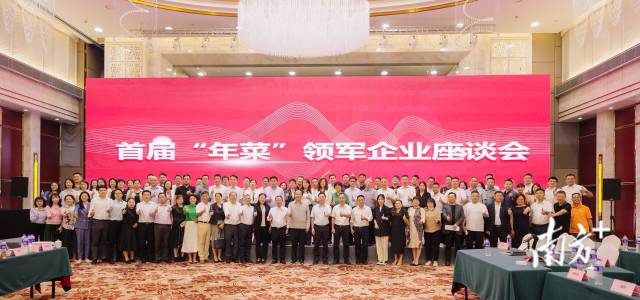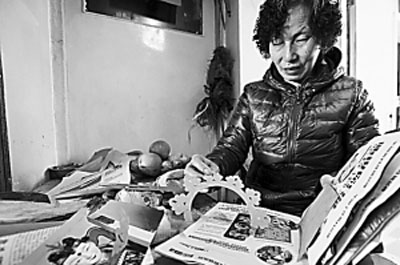"I don’t know how long my days will last. If I can choose again, I will definitely not listen to them. I must go to the hospital for regular treatment as soon as possible." Yang Rong, a cancer patient, lamented when he reflected on his experience of going to the hospital in a hurry, and it was a pyramid scheme that caused him to be cheated of his money and miss the "golden treatment period". An investigation by the reporter of the Economic Information Daily found that the pyramid schemes that victimized Yang Rong and others were once under the guise of being able to treat cancer, and under the cover of "vest" such as "company, product and training", they quickly set up a pyramid for pulling people’s heads to get rebates.
Experts said that in recent years, pyramid schemes have been changing their waistcoats, but their three characteristics of paying entry fees, developing members at different levels and providing high rebates will not change. When people are engaged in investment activities, they must keep their eyes open and don’t believe that there will be "pies falling" in the sky.
Mystery:
The price of internal anti-cancer courses is as high as 18,800 yuan.
After paying 18,800 yuan, he became an intermediate class student and entered the company to attend classes. During the lectures, Master Zhang repeatedly asked the students if they had brought a voice recorder to record, and said that after class, the instructor would search them.
At about 5 pm on May 4th this year, the entrance of Guangxi Guanghe Santong Company, located on the 9th floor of a hotel in Qinzhou City, Guangxi Province, became lively, and students in uniform came to sign in one after another. This was the largest internal training for the company in the first half of this year. More than 160 students from all over the country participated in the training, all of whom became intermediate class students after paying 18,800 yuan.
They traveled long distances to this city in the southwest border, just to learn from Master. Their master is Zhang, the 10th generation descendant of Zhang’s Fast Needle with a history of 300 years, and the legal representative of Guangxi Zhuowei Santong Health Care Co., Ltd..
The students in the intermediate class were asked to hand over their mobile phones and keep them in the custody of the instructors. After that, the students entered the company and began to attend the class. In a room with closed curtains, the class lasted from 6 pm to 12 midnight. In class, Master Zhang once again described how he and his wife saved lives and cured cancer through clever acupuncture and the company’s health products, and how their medical skills caused a sensation in Beijing.
"The company will soon set up an international department, and we will go abroad and serve the world on behalf of Chinese medicine acupuncture. We also need to cultivate ‘ The second generation of needles ’ Conduct acupuncture training classes for children aged 5-15. " Master Zhang on the stage described the bright future of the company with passion, and the students under the stage took notes carefully. Some of them with good performance will also "swipe Master’s card" to go to Indonesia for free on May 7.
During the six-hour lecture, Zhang repeatedly asked the students if they had brought a recorder to record, and said that the instructor would search them after class.
This kind of training course was also heard by Zhou Fang last year. Zhou Fang is a junior member of the three links company. Later, in order to treat her boyfriend with a discount on health care products, she recharged 100 thousand yuan and became an A-level shopkeeper.
Misleading:
Cancer patients miss the "golden treatment period"
Yang Rong was suffering from early colon cancer. He went to the doctor in a hurry and listened to the words of the "magic doctor". He spent nearly 100,000 yuan on health care products and tried various methods such as acupuncture, moxibustion and drinking ginger lean porridge. The final result was that cancer cells spread to the brain and were diagnosed as advanced colon cancer.
In July 2018, 37-year-old Yang Rong accompanied his girlfriend Zhou Fang to have a physical examination in Pingchang County Hospital, Sichuan Province. Because she felt a little dull pain in her stomach, Yang Rong had a colonoscopy and pathological examination. The results showed that "a little glandular epithelium was severely dysplasia, with local canceration" and was diagnosed as early colon cancer. "At that time, the doctor advised me to do surgery to remove the lesion immediately, saying that the cure rate of early colon cancer was very high." Yang Rong said.
Hearing that they had cancer, Yang Rong and Zhou Fang panicked and began to ask around for famous doctors. After learning this news, Zhou Fang’s friend Wang Cheng recommended them to find their own master — — A "magic doctor" who has thousands of disciples and can cure cancer, that is, Zhang, the legal representative of Guangxi Zhuowei Santong Company.
Zhou Fang then contacted Huang, a disciple of the "God Doctor". After understanding the condition through WeChat communication, Huang discouraged them from undergoing surgery. "Never operate. Once you operate, cancer cells will spread everywhere like a hornet’s nest!" Huang told Zhou Fang through WeChat voice that as long as he followed his master’s method, he could "100% cure cancer" without surgery.
The two people who were in a hurry to go to the hospital took a long-distance train and came to Qinzhou City, Guangxi to visit Zhang, a "god doctor". "When I got there, I saw him giving a lot ‘ Disciple ’ The lecture was huge, and our hearts suddenly sprouted hope. " Yang Rong said.
After "feeling the pulse" for Yang Rong, Zhang categorically said that his "sister" who had colon cancer before was cured by him. As long as he maintained it according to the plan he gave and cooperated with a large number of health care products and acupuncture treatment of their company, it would be saved.
In the following four months, Yang Rong and Zhou Fang spent nearly 100,000 yuan to buy the company’s health care products, and tried dozens of methods such as acupuncture, moxibustion, drinking ginger lean porridge, supplementing probiotics and soaking feet. However, Yang Rong’s health did not improve, but she began to have a persistent fever, cough and bloody stool. Hearing these symptoms, the "big brother" Huang evaded: "This is just ‘ Anal fissure ’ ‘ Hemorrhoids ’ It has nothing to do with cancer. " Zhou Fang, who began to feel that something was wrong, wanted to meet Zhang, but she was repeatedly rejected. On November 12th last year, Zhuowei Santong Company set up a "big class" in a hotel in Guangzhou. When they heard the news, they rushed to the scene, trying to ask Zhang for a "diagnosis and treatment" again.
The process of asking for an audience was not smooth, so they had to block Zhang at the door at the end of the big class. Yang Rong, who was weak, fainted on the spot. When Zhang saw it, he stopped giving him needles to treat the disease, but asked them to go to the hospital for medical treatment. "He said he was an imperial doctor, but a living patient fainted in front of him, but he didn’t do anything about it. Then I suddenly realized that he was a liar!" Zhou Fang immediately took Yang Rong to a taxi, caught the fastest flight back to Chengdu, and went straight to west china hospital for rescue.
Severe anemia, hemoglobin content is only 30% of normal people, and cancer cells have spread to the brain, which is diagnosed as advanced colon cancer … … After admission, the hospital immediately issued a notice of critical illness. After three days of rescue, Yang Rong struggled to get back a life.
Truth:
The so-called "health products" are just ordinary foods.
Experts pointed out that the expensive health care products are ordinary foods, which are harmless to the human body, but they are useless and certainly can’t cure the disease.
After nearly forty times of radiotherapy and chemotherapy, Yang Rong finally got the indication of surgery. In April this year, he underwent surgery in Huaxi Hospital to remove local lesions, but the golden treatment period that had been delayed before could never come back.
Yang Rong’s attending doctor at West China Hospital said that when Yang Rong was admitted to the hospital last November, his condition was already very critical, with not only cancer in his colon, but also brain metastasis. "Generally, brain metastasis occurs in colon cancer, and the chance of cure is even lower. The patient gave up the treatment opportunity for more than four months, which had a significant adverse effect on his treatment effect. "
For Yang Rong, along with the golden treatment period, there are two people who bought health care products for treatment and spent nearly 300,000 yuan after hospitalization.
Seabuckthorn tablets, probiotics, peptide algae powder, peptide clear tablets, Cordyceps militaris tablets … … Zhou Fang showed reporters the health care products that cost more than 100,000 yuan. These health care products were distributed by Guangxi Guanghe Santong Company and produced by Wuhan Zheguan Life Science and Technology Co., Ltd. The unit price ranges from 260 yuan to 598 yuan, among which a product named Xuelian Cream costs 598 yuan a box, and a box of 30 packets. "Master asked me to eat six packs a day, and the snow lotus cream alone will cost more than one hundred yuan a day. There is also a box of peptide algae powder that costs 480 yuan. It also takes 6 packs a day and eats a box in 5 days. " Yang Rong said.
"This Cordyceps tablet, written in the company’s product catalogue, is a small box of Cordyceps tablets in 380 yuan. Everyone always thought it was a Cordyceps tablet." Zhou Fang said. The reporter saw on the outer packaging of the product that the word pupa was written very small, so if you don’t pay attention, you can’t see it at all.
The reporter noticed that the purchase of these products did not get a formal invoice, and the products did not have the "blue hat logo" of national health food. From the ingredients indicated in the products, they were mainly pumpkin powder, corn starch, natto powder and other food ingredients, and the most expensive Saussurea involucrata paste was marked with honey, cassia seed, kudzu root and so on. Professor Che Zhenming, director of the Department of Food Science and Engineering in xihua university, said, "These ingredients are ordinary foods. Eating them is harmless to the human body, but it is useless. It is definitely incurable."
Angry:
MLM organizations brainwash and cheat people.
In the name that products can fight cancer, we advocate that western medicine can’t do it, and we have to rely on Chinese medicine to cure cancer. After tricking people in, we began to brainwash people and pour chicken soup into life, claiming that selling company products can drive luxury cars and live in villas, encouraging more people to come in.
As former insiders, Zhou Fang and Wang Cheng told reporters about the operation mode of Zhuowei Santong Company — — Introduce a person to pay 3800 yuan to become a member of the junior class, and the introducer can get a rebate from 900 yuan; An introducer pays 18,800 yuan to become a member of the intermediate class, and the introducer can get a rebate of 4,000 yuan. Introducers become new members’ brothers and sisters, and there are team bosses above them. The team bosses are several big disciples of "Master". "There are about a dozen teams in the company, and there are six or seven hundred people in a team at most." At the same time, if you recharge 50,000 yuan, you will become a B-level shopkeeper, and if you recharge 100,000 yuan, you will become an A-level shopkeeper. After you become a shopkeeper, you will get a certain discount on products from the company.
Since December 2018, Taowei Santong Company has launched a "new business", which allows students to pay 8,100 yuan and receive a "doctor’s practice certificate" after four to five days of training in the company, and then they can "hold a certificate" to give themselves and people around them needles to see a doctor.
After Yang Rong was critically ill, Zhou Fang, who suddenly woke up, began to collect evidence and hired a lawyer. "Their routine is to advocate that western medicine can’t do it in the name that products can fight cancer. To cure cancer, we have to rely on Chinese medicine. After cheating people in, they began to brainwash and pour chicken soup into life, claiming that selling company products can drive luxury cars and live in villas, encouraging more people to come in." Zhou Fang said that many patients who really want to seek medical advice have gone astray.
At the end of April, after learning that Zhang was going to give a big training for intermediate class students in Qinzhou, the reporter suggested that Zhou Fang go to the relevant local departments in Qinzhou to complain.
On the afternoon of May 5, the reporter accompanied Zhou Fang to the Qinbei Market Supervision Bureau of Qinzhou City, the Qinbei District Health and Family Planning Supervision Office and other departments to make complaints, and provided clues about the company’s ongoing training, hoping that relevant departments would conduct on-site inspections.
The market supervision, public security and health supervision departments of Qinzhou City then organized personnel to come to the company at about 4: 30 pm and block the scene. It was found at the scene that the company was conducting publicity and training for more than 160 people from all over the country, and the students were practicing acupuncture with each other. After preliminary evidence collection and investigation, the law enforcement officers took the 48 identified relevant personnel away from the scene for trial in three areas, detained a batch of articles involved and sealed up the office space of Guanghe Santong Company, and the rest were dismissed on the spot.
After an overnight trial, the Qinbei District Market Supervision Bureau initially determined that Guangxi Guanghe Santong Company engaged in pyramid selling business activities in disguised form by paying membership fees under the guise of teaching acupuncture, moxibustion and selling related health care products.
On the afternoon of the 5th, the reporter saw that due to studying in a confined space for a long time, several weak students vomited, and the ambulance personnel sent by law enforcement agencies came to the hospital for treatment. However, these students refused to seek medical treatment and bluntly said: "Your hospitals are all deceptive. We will see a doctor ourselves and don’t need you." The students immediately took out the acupuncture bag they carried with them and began to "treat" themselves with needles, and began to eat the company’s products — — Expensive Saussurea involucrata cream.
The reporter confirmed from the health supervision department of Qinbei District that Zhang and Huang, who "treated" Yang Rong’s cancer, did not have the doctor qualification certificate and doctor’s practice certificate issued by the health department, and the post competency certificate issued by the "China Health Personnel Training and Guidance Center" after their company charged the students 8100 yuan was not a formal medical certificate.
Doctors in the Acupuncture Department of Sichuan Hospital of Integrated Traditional Chinese and Western Medicine told the reporter that if the acupuncture is too deep, it may cause visceral injuries such as pneumothorax, and if the disinfection is not strict, it may lead to infection. The previous teaching mode of the three links was to let students without any medical foundation return to their hometown after a few days of training to give needles to people around them to "treat diseases".
Alert:
Combating pyramid schemes faces new challenges
"I don’t know how long my days will last. If I can choose again, I will definitely not listen to them. I must go to the hospital for regular treatment as soon as possible."
Li Xu, president of China Folk Anti-MLM Association, said that the current pyramid selling activities have changed from remote pyramid selling and personal control to network pyramid selling and mental control. "The above case is covered by the company, products and training, which is quite confusing." Li Xu said that the common feature of this kind of cases is that they often provide "three noes" or low-quality and high-priced products, supplemented by some so-called skills training without scientific basis. The essence of this kind of cases is to develop members layer by layer in the form of rebates and brainwash their members into pyramid schemes.
The reporter learned that from 2017 to now, Qinzhou City has organized 137 large-scale crackdown on pyramid schemes, seized 2,406 people suspected of engaging in pyramid schemes, and educated 2,297 people to dismiss pyramid schemes.
The person in charge of the Communication Office of Qinzhou Municipal Market Supervision Bureau told the reporter that at present, the local crackdown on pyramid schemes is facing new challenges. First, the anti-investigation ability of MLM organizations has been enhanced, especially in terms of capital flow; Second, MLM personnel attack and defend the alliance against interrogation; Third, pyramid schemes are "guerrilla".
In addition, law enforcement strikes face legal constraints. First, the prosecution standard of the crime of organizing and leading pyramid schemes determined in the current Criminal Law is too high, which does not match the harm of pyramid schemes, and there is a lack of detailed provisions on the evidence requirements, transfer standards and jurisdiction of the crime, which makes it difficult to arrest and prosecute.
Second, there is a gap between the criminal norms and administrative norms to crack down on pyramid schemes. The public security organs lack the legal basis for imposing administrative penalties on senior pyramid schemes who do not constitute crimes. The Regulations on the Prohibition of MLM endows the market supervision department with certain powers, but in reality it is difficult to investigate and collect evidence only by the law enforcement means of the market supervision bureau. Third, the legal norms of civil liability for pyramid schemes are not perfect, and it is difficult for pyramid schemes victims to get the necessary judicial relief.
Zhou Fang’s lawyer, Yang Qiao, a lawyer of Sichuan Chuanrong Law Firm, said that it is difficult to investigate the criminal responsibility of the organization leader for Yang Rong’s critical illness caused by misunderstanding of pyramid schemes. At present, Zhou Fang can only sue through civil litigation with false propaganda evidence in order to obtain certain civil compensation.
Zheng Lifang, an associate professor at the Law School of Sichuan University, said that the traditional "North School" and "South School" pyramid schemes are now in an obvious trend of integration and upgrading. In addition to the traditional pyramid type, they have also derived a variety of flat organizational structures such as spider web type and multi-point network type, so it is difficult to define the crime of organizing and leading pyramid schemes. It is suggested that the prosecution standards of relevant laws should be refined, at the same time, the supervision of pyramid schemes should be strengthened, and pyramid schemes should be eliminated in the bud as much as possible. The management of rental houses and hotels should also be strengthened, and the neighborhood watch system and community supervision mechanism should be established.
Li Xu said that in recent years, pyramid schemes have been changing their waistcoats, but their three characteristics of paying entry fees, developing members at different levels and providing high rebates will not change. When people are engaged in investment activities, they must keep their eyes open and don’t believe that there will be "pies falling" in the sky.
At present, the local public security department and procuratorate in Qinzhou have arrested three key personnel of the three links company and launched an online pursuit order against "Master" Zhang. The case is under further investigation and evidence collection.
In Chengdu, Yang Rong is still receiving radiotherapy and chemotherapy in the hospital. The very high recurrence rate after advanced cancer surgery makes him not optimistic about the future. "I don’t know how long my life will be. If I can choose again, I will definitely not listen to them. I must go to the hospital for formal treatment as soon as possible."
Now, Zhou Fang has to take care of her seriously ill lover while running around for rights protection. In Yang Rong’s hometown, his two children born to his ex-wife are living alone with their elderly grandparents, looking forward to the day when Yang Rong recovers.
